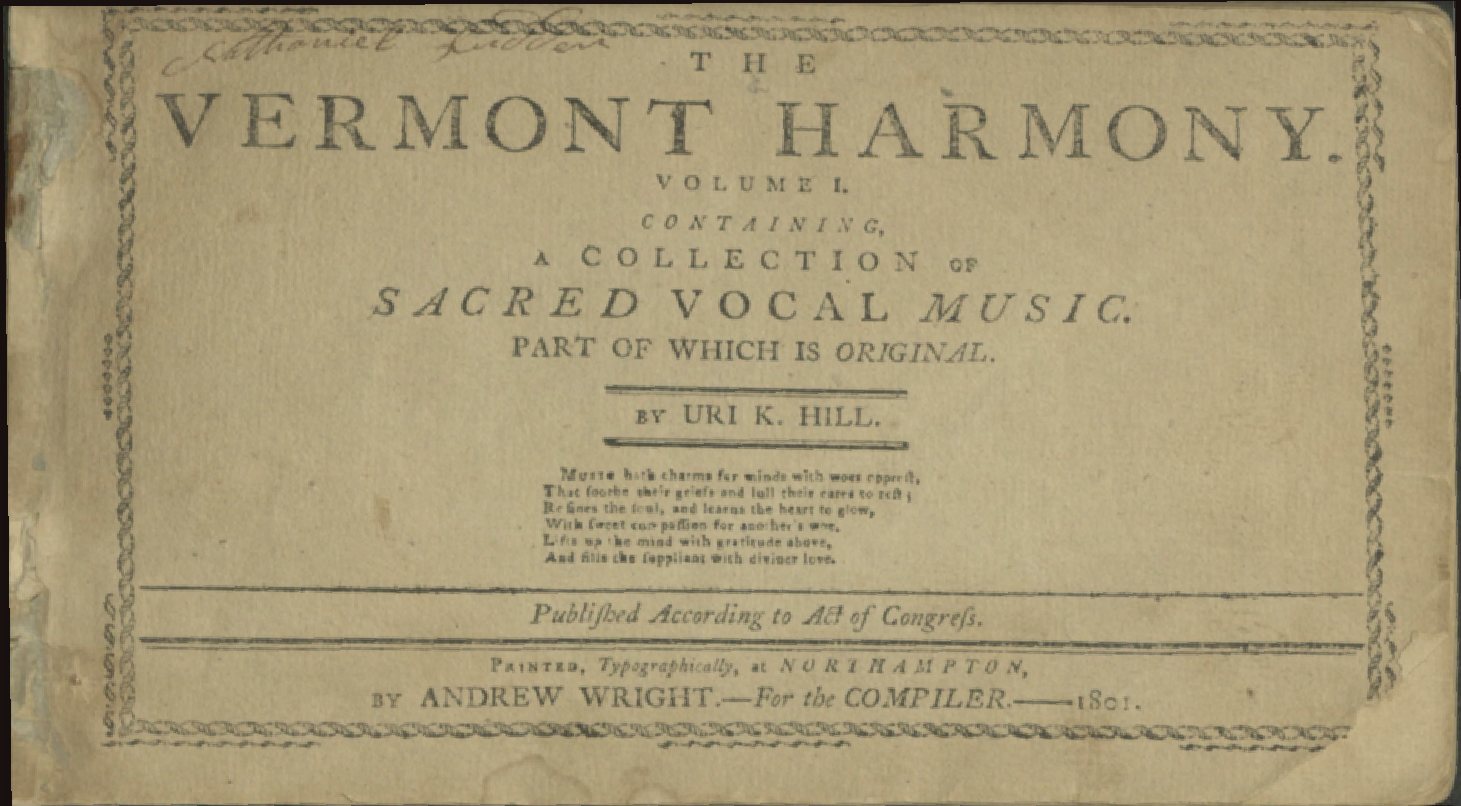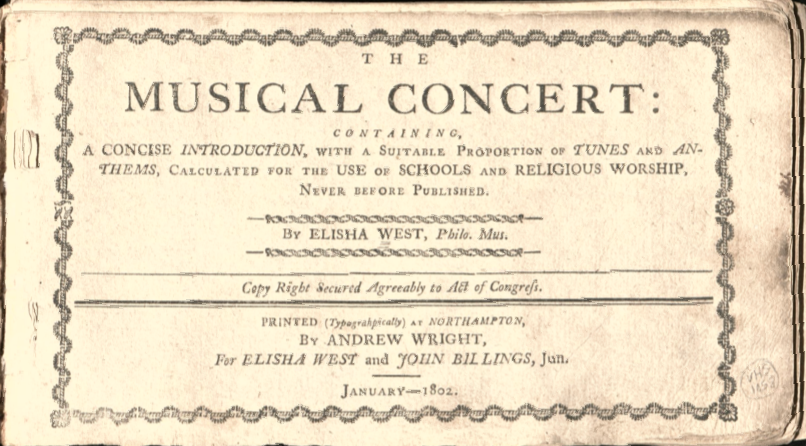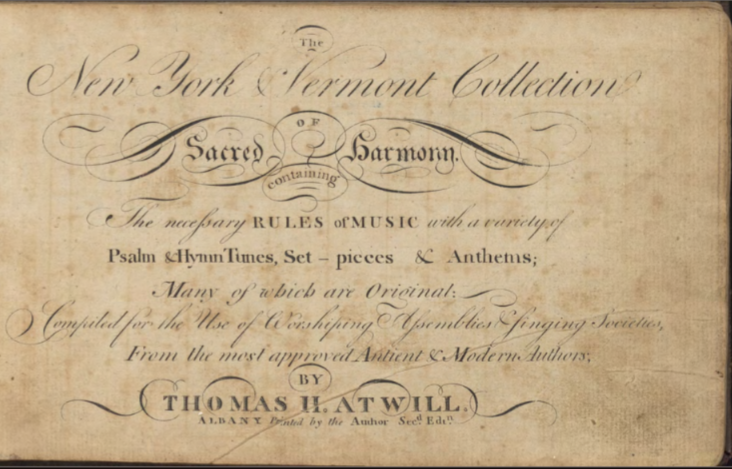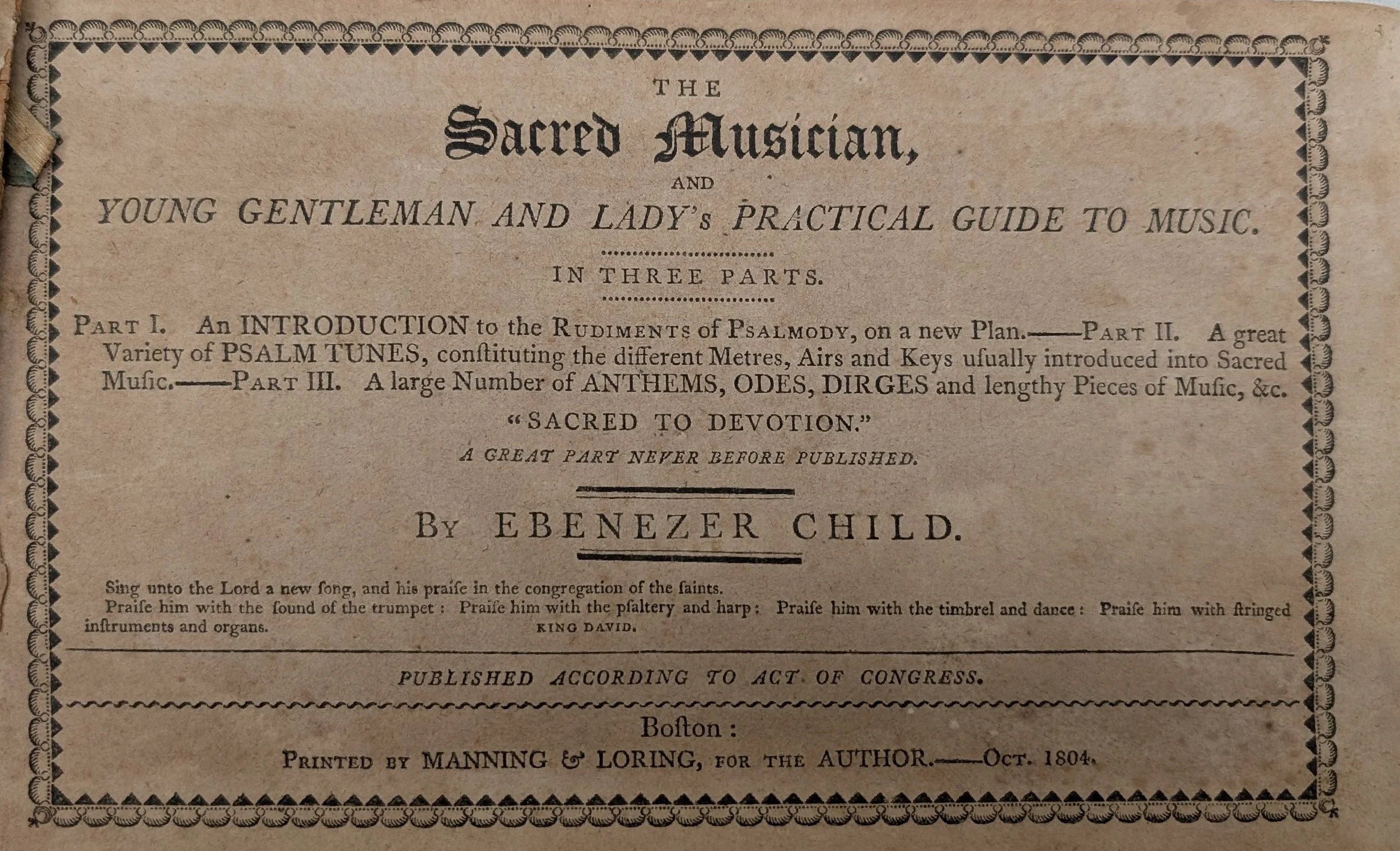Vermont Harmony, 1801 Uri K. Hill. Rutland Vermont
Vermont was almost a state in 1790, and Vermonters lived in towns and villages close to the land. They learned and sang music at church, in singing schools, at camp meetings, and while they followed the plow or turned the spinning wheel. They also wrote and taught music. Between 1790 and 1810, Vermont singing masters (who were also farmers, coopers, tavern-keepers, horse breeders) published seven tunebooks, compiling favorite tunes and original compositions .
Noah Meace, Creative Director, Vermont Early Music Project
By presenting the stories and work of the seven compilers of tune books in Vermont we have a center. From that, we follow music and community back to the 11th century, forward to the present, and also anticipate something in the future. Most of the material presented in this website is the result of collaborations which in themselves create a form of community. Inherent in anything presented here is outreach for and promotion of singing.
We offer you an invitation to share a journey of time, culture and community with us.
….and hopefully at some time to sing with us!
Kerry Cullinan, Facilitator, Vermont Early Music Project
Musical Concert 1802. Elisha West. Woodstock Vermont
New York & Vermont Collection 1804.
Thomas Atwill. Castleton Vermont
Sacred Musician, 1804. Ebenezer Child. Brandon Vermont
Christian Harmony, 1805, Jeremiah Ingalls, Newbury, Vermont
Columbian Sacred Minstrel, 1809. Joel Harmon, Pawlet Vermont
Province Harmony 1809. Hezekiah Moors. Mont Holly Vermont







